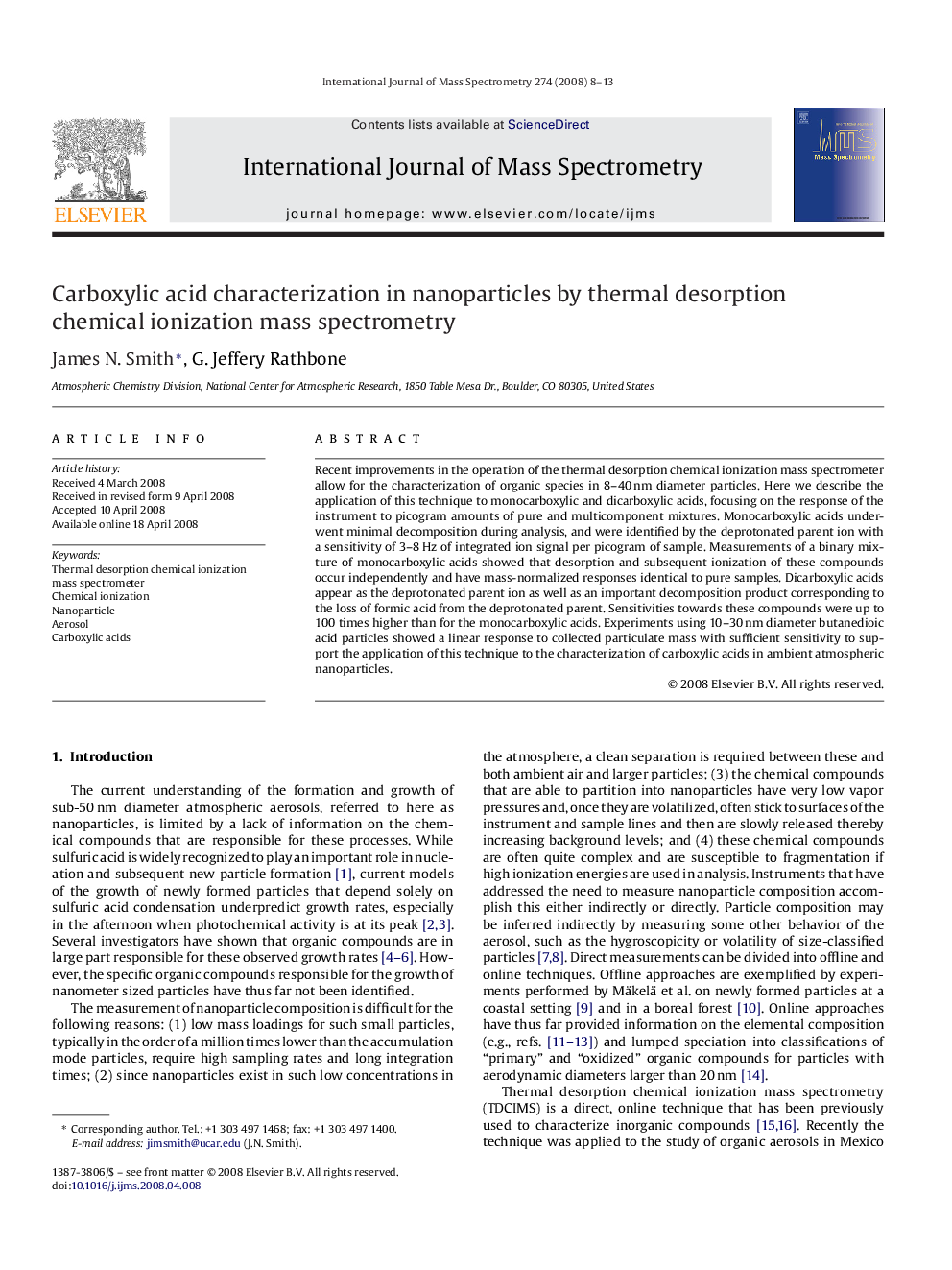| Article ID | Journal | Published Year | Pages | File Type |
|---|---|---|---|---|
| 1194877 | International Journal of Mass Spectrometry | 2008 | 6 Pages |
Abstract
Recent improvements in the operation of the thermal desorption chemical ionization mass spectrometer allow for the characterization of organic species in 8-40Â nm diameter particles. Here we describe the application of this technique to monocarboxylic and dicarboxylic acids, focusing on the response of the instrument to picogram amounts of pure and multicomponent mixtures. Monocarboxylic acids underwent minimal decomposition during analysis, and were identified by the deprotonated parent ion with a sensitivity of 3-8Â Hz of integrated ion signal per picogram of sample. Measurements of a binary mixture of monocarboxylic acids showed that desorption and subsequent ionization of these compounds occur independently and have mass-normalized responses identical to pure samples. Dicarboxylic acids appear as the deprotonated parent ion as well as an important decomposition product corresponding to the loss of formic acid from the deprotonated parent. Sensitivities towards these compounds were up to 100 times higher than for the monocarboxylic acids. Experiments using 10-30Â nm diameter butanedioic acid particles showed a linear response to collected particulate mass with sufficient sensitivity to support the application of this technique to the characterization of carboxylic acids in ambient atmospheric nanoparticles.
Related Topics
Physical Sciences and Engineering
Chemistry
Analytical Chemistry
Authors
James N. Smith, G. Jeffery Rathbone,
